“This post contains affiliate links, and I will be compensated if you make a purchase after clicking on my links.”
Last Updated on May 28, 2024
Great Danes are most commonly known for their intimidating size and gentle temperament. Hence, earning them the titles “Apollo of Dogs” and “Gentle Giant”.
However, did you know that some Great Danes aren’t as intimidating in size as they should be? Yes! There are actually Great Danes that are smaller than average – and these dogs are called Miniature Great Danes.
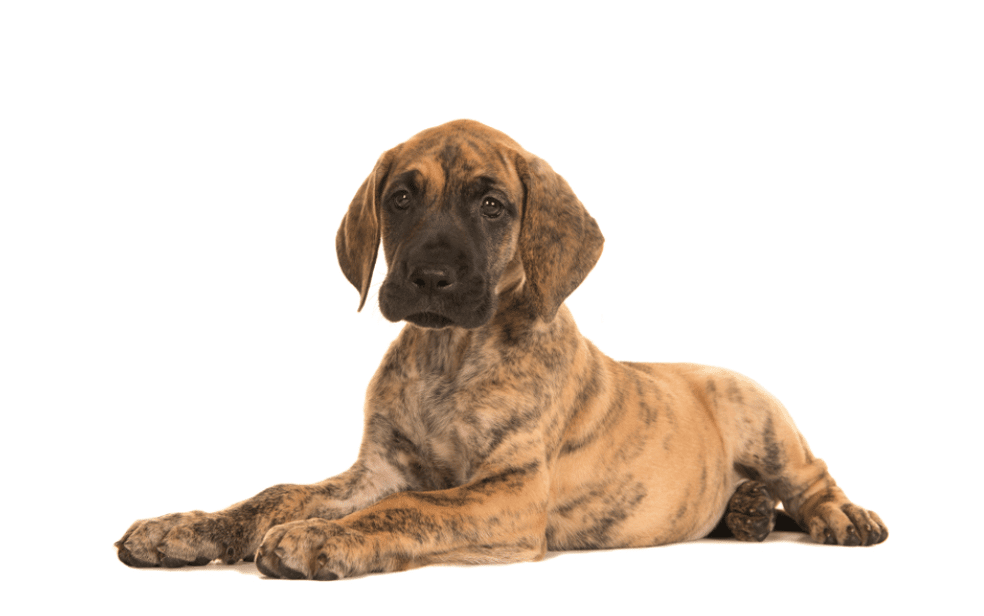
However, don’t let the word “miniature” fool you! Miniature Danes are still larger than most other adult dog breeds.
Obviously, there are a lot of misconception surrounding miniature Danes. And in this article, you’ll learn everything you need to know about these dogs. Continue reading to find out more.
Miniature Dogs
Before we learn about Miniature Danes, let’s first determine what miniature dogs are. Generally, canine breeds are grouped into categories based on their sizes. And they are the following:
- Large or giant size
- Medium size
- Miniature size
- Toy size
While miniature dogs are described as dogs that are typically under 20 pounds, they can also refer to smaller versions of other dog breeds.
Popular Miniature Dogs
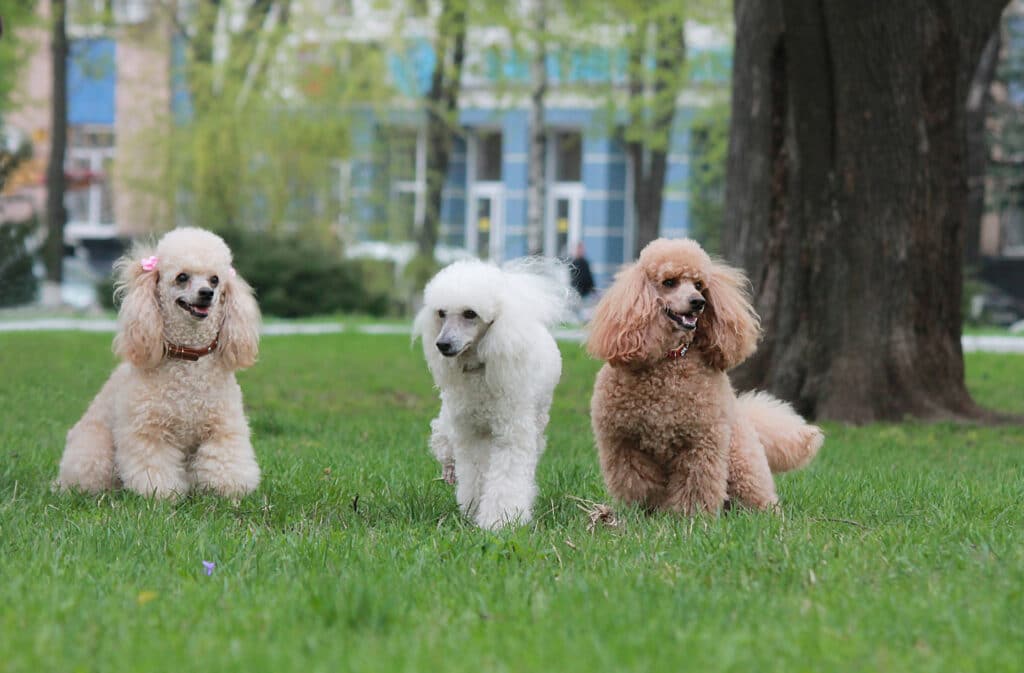
Aside from miniature Danes, there are a lot of dog breeds that have miniature versions. Some of them are officially recognized breeds, but some are not. Here are a few of the most popular miniature breeds:
1. Miniature Poodle
Poodles are one of the most sought after dog breeds out there. They are extremely and athletic dogs, and they come in three different and official sizes – Standard, Miniature, and Toy.
While all three sizes have the same build and proportions, miniature Poodles stand around 28 to 38cm in height and can weigh between 5 to 9kg.
2. Miniature Pinscher
There is a misconception that a miniature Pinscher is a miniature version of the Doberman Pinscher. However, this is not true. And while the name suggests otherwise, the miniature Pinscher is actually a breed of its own.
Miniature Pinscher are known and distinguished for their gait. So, if you ever see a mini Pin prancing into a room, you’ll notice the way they walk, which is called the hackney gait.
These dogs, despite their size, are proud, self-possessed, and fearless. They’re a prime example of what a small dog with a big dog personality looks like.
3. Miniature Schnauzer
Similar to Poodles, Schnauzers come in three different and official sizes – Giant, Standard, and Miniature.
Miniature Schnauzers, also known as Zwergschnauzers, are around 30cm in height and can weigh between 6.4 to 9.1 kg. These dogs are protective and intelligent, and despite their size, actually make amazing watchdogs. Furthermore, they have an outgoing personality and generally make good family dogs.
4. Miniature Dachshund
We know Dachshunds are small, but yes, they can be smaller! The only difference between the Standard and Miniature Dachshund is really their size. While the standard Dachshund generally weighs between 7 to 14.5 kg, the miniature version weighs 5 kg or less.
Mini Dachshunds are generally friendly and playful dogs but can be vigilant when need be. So, don’t let their little legs fool you! Because these dogs are smart and can be excellent watchdogs.
Miniature Great Dane
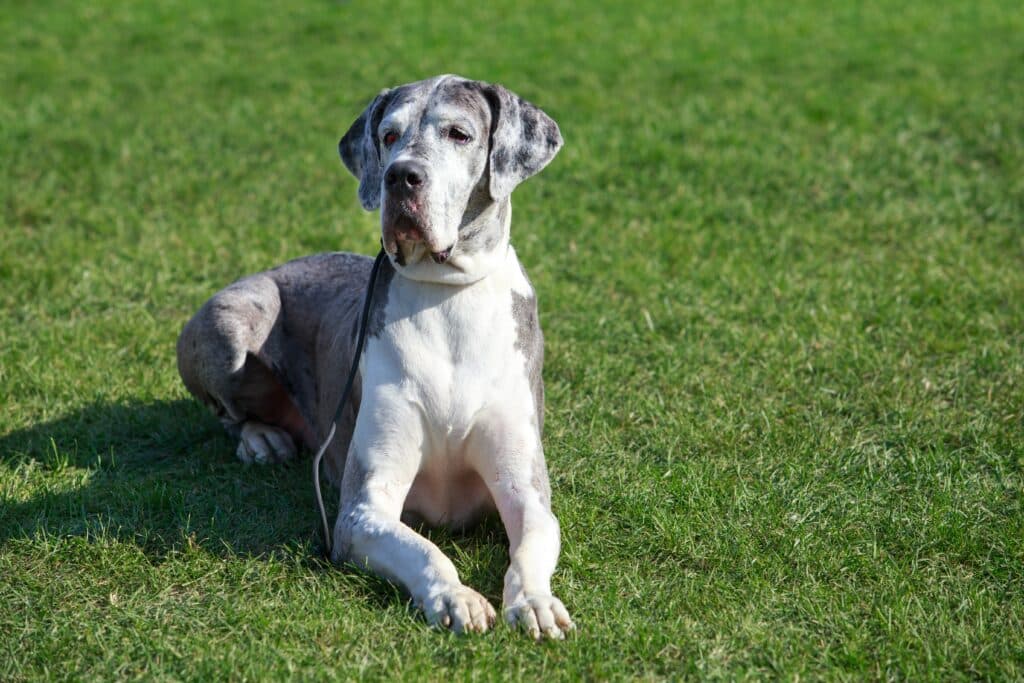
A miniature Great Dane is simply a Dane who is unable to reach the breed’s usual height, so they are smaller than usual.
These Danes are also referred to as Mini or Pocket Great Danes. Don’t be fooled by the word “miniature” or “pocket”, though! Because these dogs are still bigger than most adult dogs from other breeds.
Sadly, while they are smaller in size, they are still suspectable to a number of health problems, just like any average Great Dane.
Furthermore, Unlike other miniature dog breeds like the Miniature Poodle or Miniature Schnauzer, Mini Danes are not officially recognized as a separate dog breed nor are they formally recognized by the American Kennel Club (AKC)‘s and Great Dane Club of America (GDCA)’s breed standards.
How Miniature Great Danes Come To Be
We now know and understand that miniature Great Danes are the smaller version of the humungous breed. But how do they come to be?
Here are different ways on how these dogs are bred:
Genetics
The Great Dane’s phenotype is a total manifestation of its genotype. The dogs will inherit traits from their mother and father through their genetic material. Hence, their height, coat color, and just their overall makeup would be based on their parents’ DNA.
So, naturally, two healthy and full-sized Danes will produce puppies that will inherit their height and weight. However, sometimes, a full-sized Dane may produce a smaller-than-average Great Dane in a litter, but that doesn’t mean they’re a runt. Because despite their size, they are still as healthy as their littermates.
These puppies can also be born with and diagnosed with dwarfism, a condition that is genetic.
Breeding
The miniature Great Danes are also a result from particular breeding practices. As other breeders find the idea of miniature Great Danes attractive, some breeders breed two runts to get miniature Great Danes.
But such selective breeding is not recommended at all. Because a Great Dane’s enormous size is a natural result of their genetics, purposely breeding them to become smaller interferes with their genetics and can result in health issues.
Getting miniature Great Danes is also possible by crossbreeding with other smaller breeds since it’ll inherit the genes of the smaller dog. In this case, a miniature Great Dane mix can also be healthier.
Deficiencies
A Great Dane might be lagging behind due to some deficiency. It can be because it wasn’t fed properly and accordingly during its puppyhood.
For dogs such as the Great Dane, the right kind and amount of food is vital to their growth. Since they experience rapid growth during their first year, it’s important that Great Dane owners understand how to properly sustain this.
Furthermore, feeding a puppy with adult dog food is not recommended, and vice versa.
Miniature Great Dane Size
As per AKC’s Great Dane breed standards, a male Great Dane’s height should not be less than 30 inches, and should preferably be 32 inches or more. And they should also weigh anywhere between 120 to 140lbs.
Meanwhile, a female Dane’s height should not be less than 28 inches, and should preferably be 30 inches or more. And they should weigh anywhere between 100 to 120 lbs.
If a Great Dane doesn’t meet any of the breed standards’ height requirement once they’re fully grown, then they are not recognized by the AKC and GDCA and are considered miniatures.
Miniature Great Dane Growth
Generally speaking, a Great Dane goes through a rapid growth during the first year of their life. As a matter of fact, a Great Dane’s growth in a year is compared to the growth a human child goes through in 14 years.
Furthermore, there are times where Great Danes also experience growth spurts during their puppyhood. And then they usually stop growing and are considered “fully grown” between 1.5 years and 2 years of age.
So, if your Dane doesn’t meet the breed standards’ even when they reach the age of two, then it is most likely that you have a miniature Great Dane.
Miniature Great Dane Appearance
A miniature Great Dane’s appearance is the same as any normal Great Dane, except for the obvious size difference, of course.
Like any Great Dane dog, a mini Dane also has a slim body structure with lean muscles. It also has a rectangular head that is narrow and flat on top, and has naturally floppy ears and a long tail.
Their neck, in proportion with their slim body and legs, is also long.
And then when it comes to their coat, it is sleek and short, so you can consider them as light to average shedders. Their coat also comes in a variety of colors and patterns, including brindle, blue, black, and harlequin.
Miniature Great Dane Temperament
Much like their appearance, miniature Great Danes have the same temperament as any Great Dane. They are social, friendly, gentle and loving, but can be territorial and protective of their loved ones when need be – earning them titles such as “Apollo of Dogs” and “Gentle Giants”.
They are good around children and get along with other animals, as long as they are socialized correctly, making them amazing family dogs.
Furthermore, they are loyal to their owners and can be protective of them when they feel like their family is being threatened, so you can trust them to be amazing guard dogs.
They’re also known people pleasers, a characteristic most Great Dane owners take advantage of when training their dogs.
They can be lazy at times and are also known to be couch potatoes who spend most of their time lounging.
Oh, and did we mention that they also like to think that they’re lap dogs? Well, it surely can be a challenge with a normal Dane, but this might not be as big of a problem with a miniature Dane.
The miniature Great Danes are also big-time jumpers! Their playful nature makes them forget just how big and heavy they can be. They love jumping on anyone and anything, be it on people, furniture, or even fences!
Miniature Great Dane Health
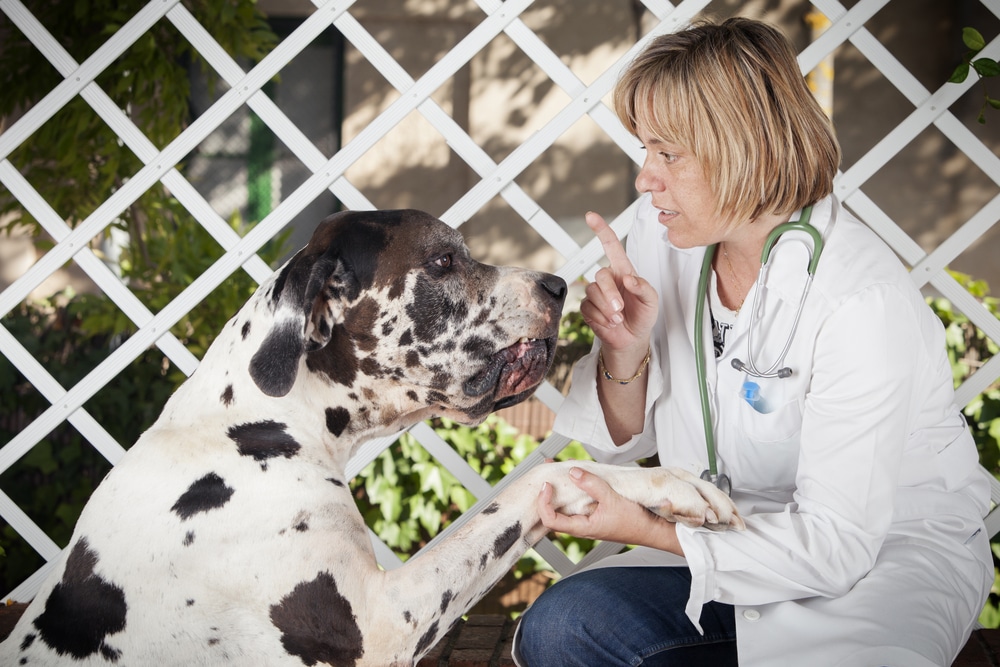
Great Danes, like other large sized breeds, are prone to a number of diseases. And miniature Great Danes are predisposed to the same health issues.
Although, if the miniature Great Dane is a mix with another smaller breed, then it will be a lot healthier and will be less predisposed to health issues.
Here are some of the most common health issues that a miniature Great Dane can be predisposed to:
1. Bloat
Bloat is a very dangerous health issues that Great Danes are predisposed to.
It is a condition where the dog’s stomach fills with gas, food, or fluid, and later expands. If left untreated, can cause the stomach to twist in itself, blocking the entrance and exit of the stomach, can stop blood circulation to the heart, and can cause death.
2. Hip Dysplasia
Hip dysplasia is a chronic disease affecting the mobility of a dog. In this condition, the dog’s hip joint doesn’t develop properly and the dog isn’t able to use its hind legs properly.
When a dog suffers from hip dysplasia, it cannot stand nor walk properly and can suffer from mobility issues and osteoarthritis.
This can happen if a Great Dane has an improper diet from puppyhood. Over or underfeeding a puppy will result in a lot of growth problems, one of them being hip dysplasia.
3. Cardiomyopathy
The Great Dane breed is prone to a heart disease called cardiomyopathy, in which the dog’s heart muscles weakens, resulting to thinner heart walls and an enlarged heart.
Oftentimes, it can lead to a build up of fluid in the chest and can even cause sudden death due to the inability of the heart to pump adequate blood throughout the body.
The exact cause of this health problem is unknown but its biggest contributing factor is genetics and, like hip dysplasia, Danes can inherit it from their parents.
Other Problems with Miniature Great Danes
While Miniature Great Danes can be healthier than normal Great Danes, they can also develop other health problems that are not mentioned above.
These problems can arise especially when breeders try to use methods to deliberately produce Miniature Great Danes. While responsible breeders will only choose healthy Great Danes to breed from, some choose runts of the litter to create the “perfect” Mini Dane.
This breeding practice can come with a lot of flaws and health risks, because it helps deviate away from the breed’s standards.
And flawed genetic material and genes can lead up to any sort of problem including dwarfism in miniature Great Danes.
Other health problems that miniature Great Danes can suffer from include:
- Joint deformities
- Incomplete organs’ formation
- Less immunity
- Flawed genes
Conclusion
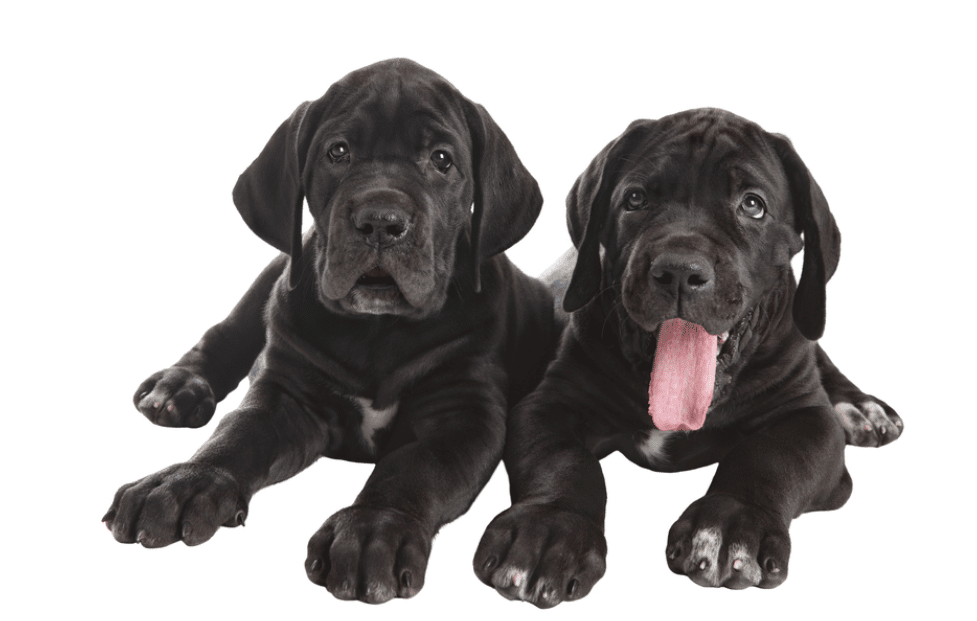
Considering everything, miniature Great Danes are just a smaller version of the Great Dane breed. They are everything a Great Dane is, except for the size. They are amazing and make great family companions.
However, we do encourage you to take caution when purchasing a miniature Great Dane and make sure to only purchase one from reputable and responsible breeders to ensure that you get a dog that is healthy.